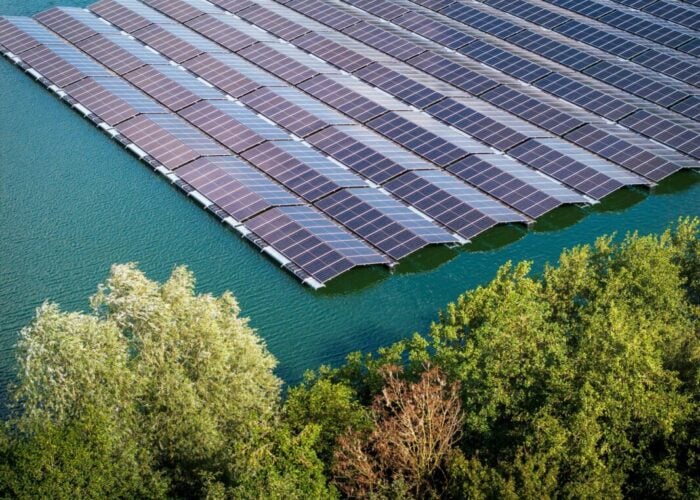Product Briefing Outline: Control Techniques has launched a ‘transformerless’ central inverter system for utility scale photovoltaic power plants that is designed to maximize investor returns through optimized availability, efficiency and yield. Control Techniques’ SPV is constructed using 145kWp, 176kWp and multiple 176kWp parallel connected inverter modules to produce any desired power rating up to 1760kWp and employs a second generation Maximum Power Point Tracking (MPPT) algorithm. Over the last 2 years Control Techniques inverters have been installed in over 80 large scale PV power plants with a combined power of 150MW. Confirmed orders for over 330MW have been received.
Problem: Conventional central inverters efficiency levels can fall below 20% of rated power due to varying solar irradiation caused by the large fixed switching losses associated with bulk inverters. Limited capabilities to operate efficiently in medium and low light conditions, typical less temperate zones such as northern Europe, reduces the potential investment returns.
Try Premium for just $1
- Full premium access for the first month at only $1
- Converts to an annual rate after 30 days unless cancelled
- Cancel anytime during the trial period
Premium Benefits
- Expert industry analysis and interviews
- Digital access to PV Tech Power journal
- Exclusive event discounts
Or get the full Premium subscription right away
Or continue reading this article for free
Solution: Control Techniques’ SPV inverter achieves Euro and CEC weighted efficiencies of 97.6%. However, the real gains are claimed in its flat load / efficiency curve and its ability to maximize energy yield in low to medium light conditions. Regardless of power rating, SPV can turn on / off at a power threshold of only 900W effectively extending the length of the operational day. The energy yield of the SPV inverter is further enhanced by Control Techniques’ second generation Maximum Power Point Tracking (MPPT) algorithm. The software is designed to track transient changes in irradiation whilst accurately determining the optimum condition across the operating temperature range of the PV plant. The MPPT range of the SPV is 400 to 800VDC, with the planned UL version operating from 300-600VDC. The benefit of increased yield under low light conditions may not be accurately reflected by the traditional efficiency weighting methodology, according to the company, and particularly in less temperate zones such as northern Europe, which could have major impact on investment returns.
Applications: All large scale PV applications, with either thin-film or crystalline photovoltaic modules. Inverter maximum turn-on voltage is 1000V DC.
Platform: Each inverter is constructed from one or more, easy to handle, compact modules that are mass produced. The active / standby sequence of the inverter modules rotates daily ensuring that all modules are exercised equally with the added benefit that individual modules accrue fewer operational hours per year than the alternative bulk inverter. The CT modular solution is claimed to offer longer service life. In the event of the loss of an inverter module the system automatically isolates the single module and continues to operate efficiently and with re-optimized capacity. Often there is no reduction in output if the prevailing meteorological conditions aren’t at the optimum. The SPV can also be oversized if required, to provide redundancy for critical installations or additional reactive power capability without additional thermal losses. The inverters are compliant with all key international grid connection standards offering both Mains Dip Ride Through and Anti Islanding capability. The SPV generates around 3.5% ITHD; consequently, no special design or de-rating of the transformer is necessary. The inverters can be easily integrated with third-party SCADA using Ethernet, Modbus or other communication networks.
Availability: September 2010 onwards.






